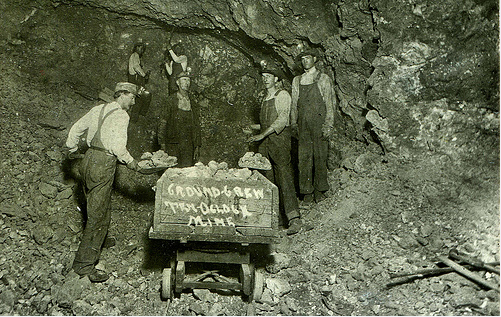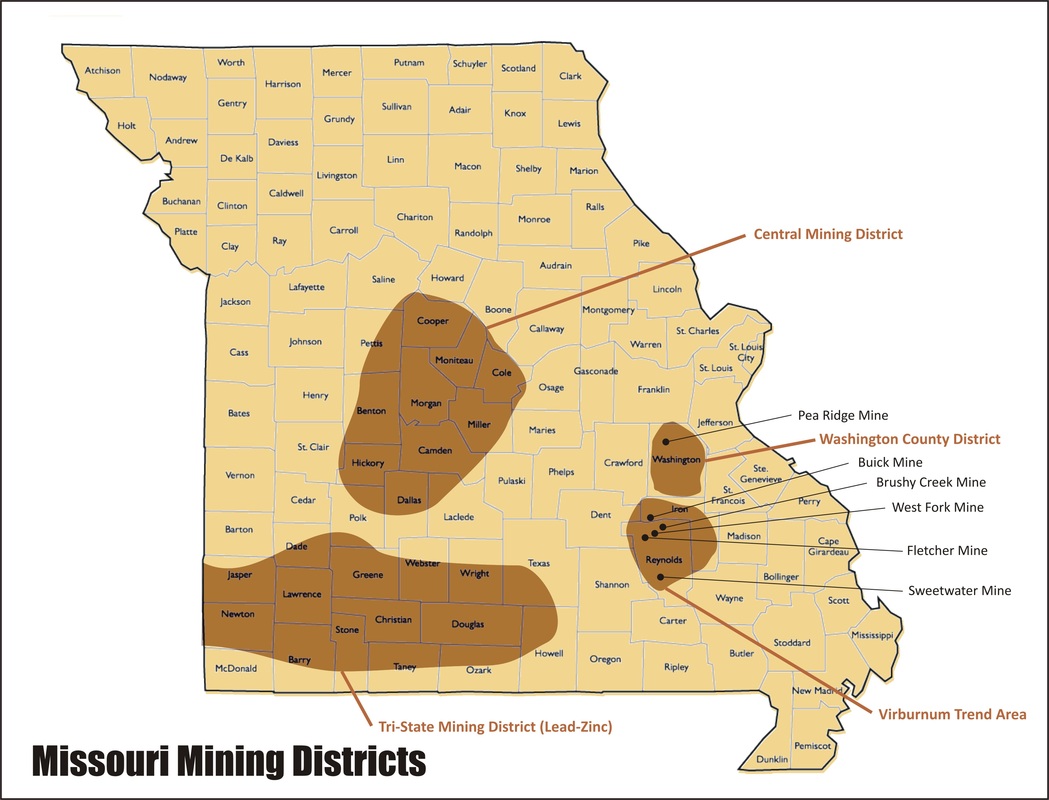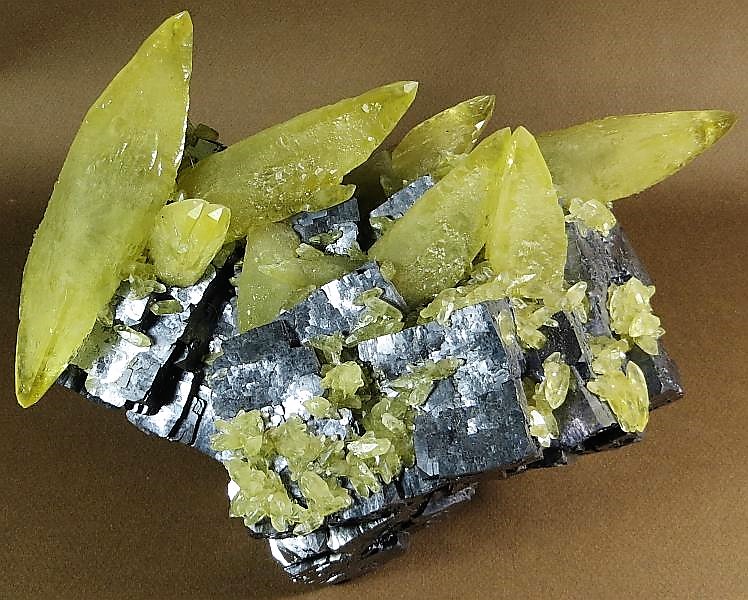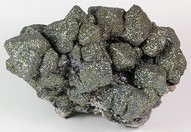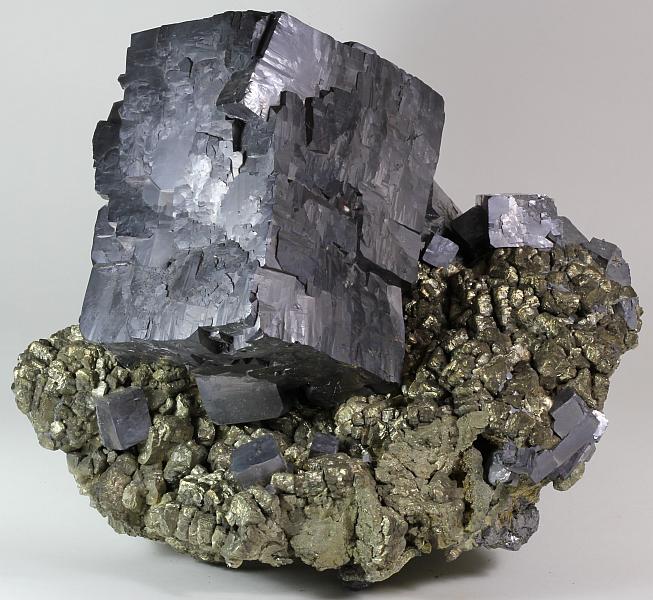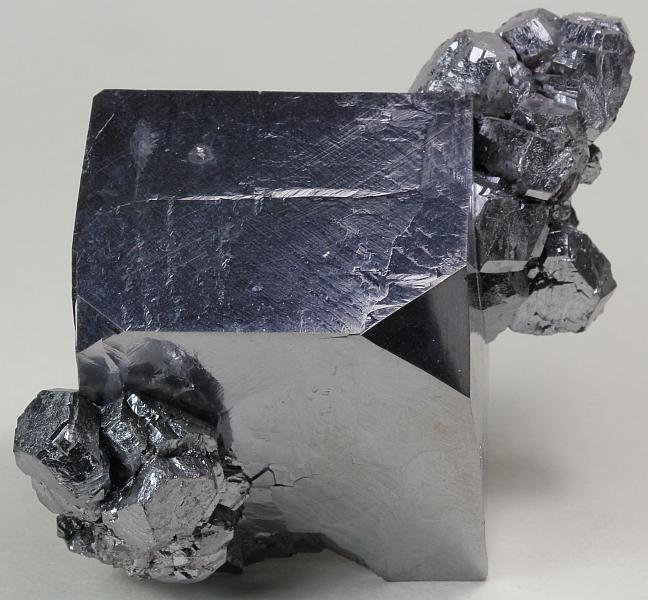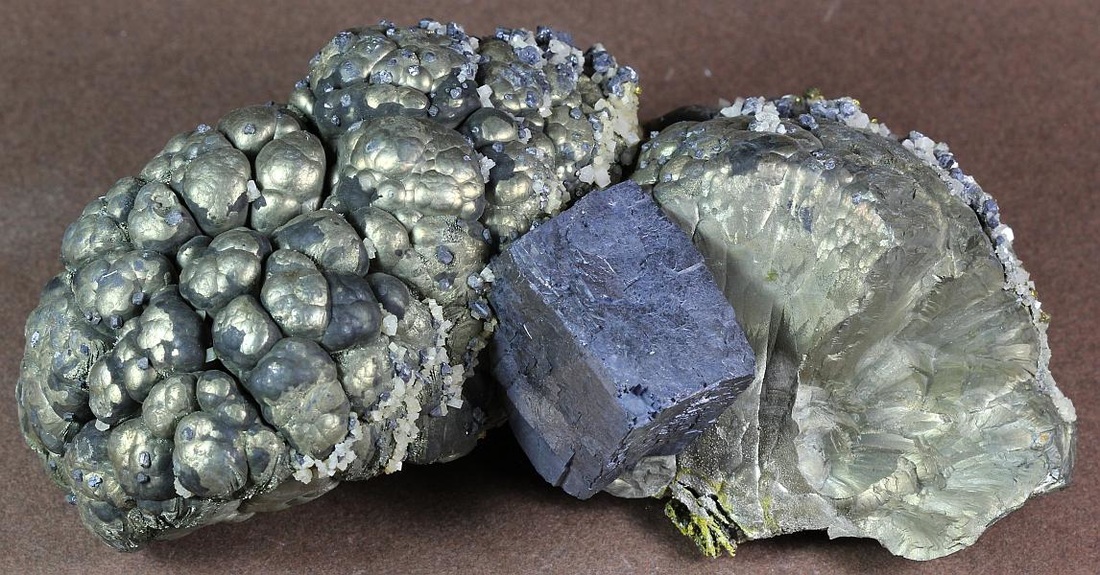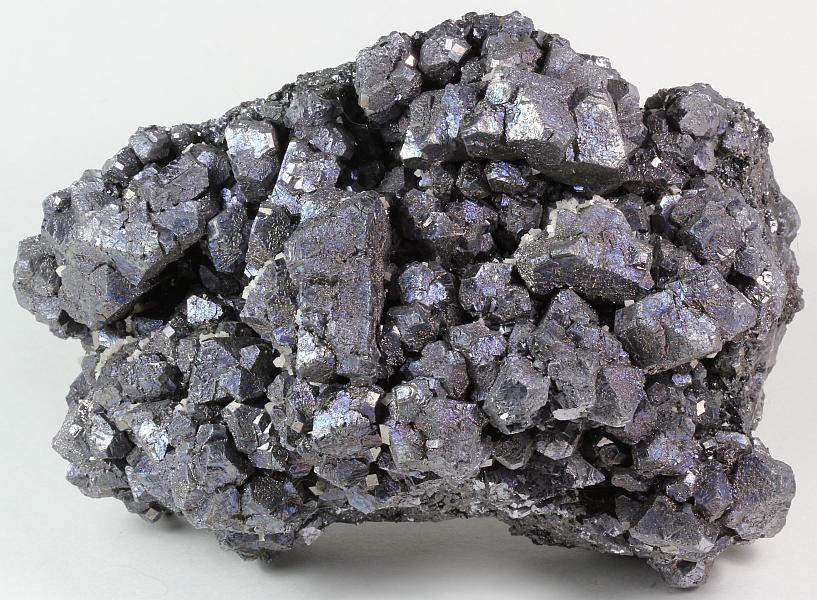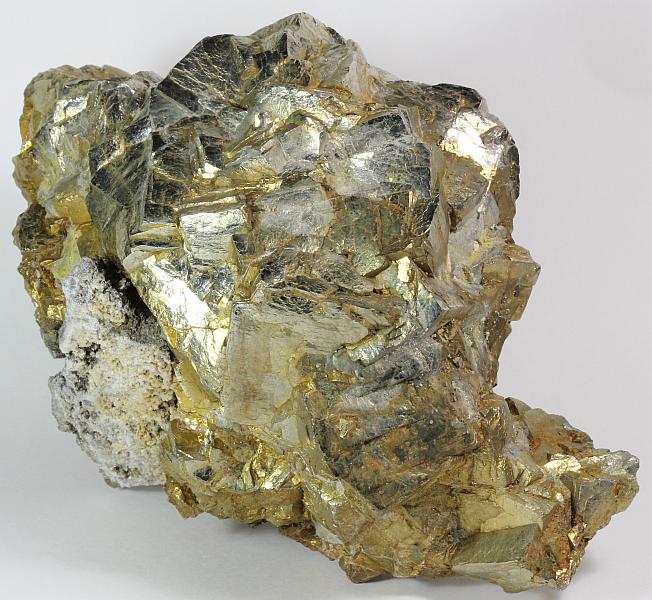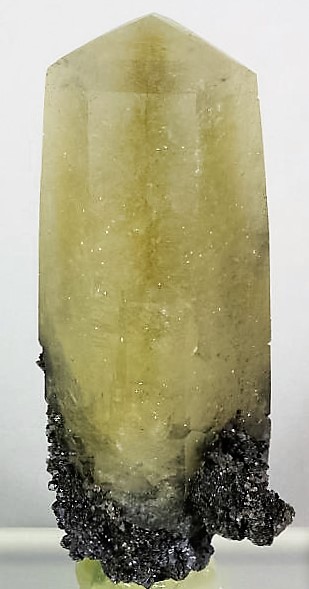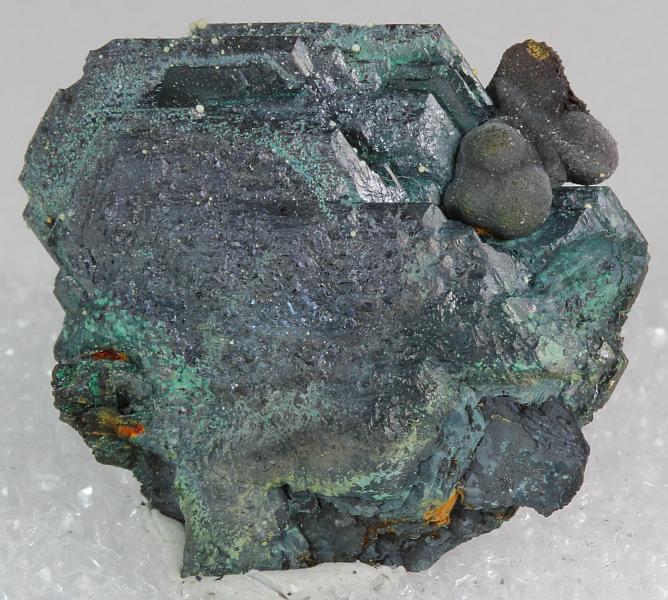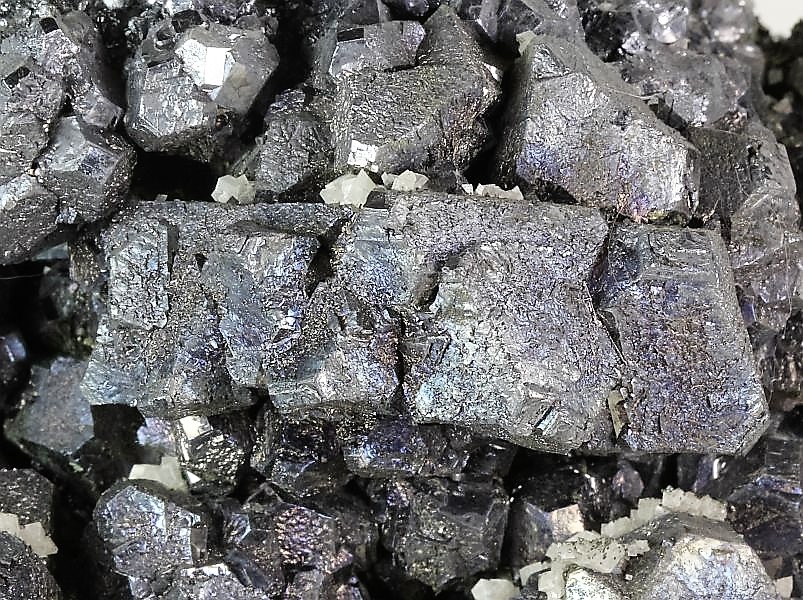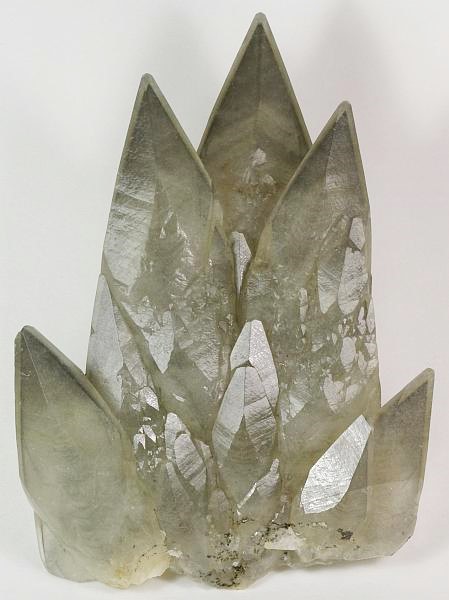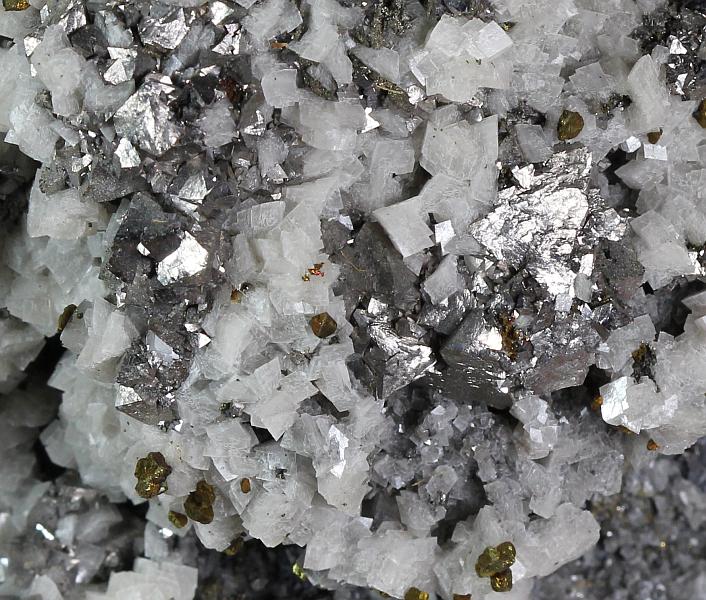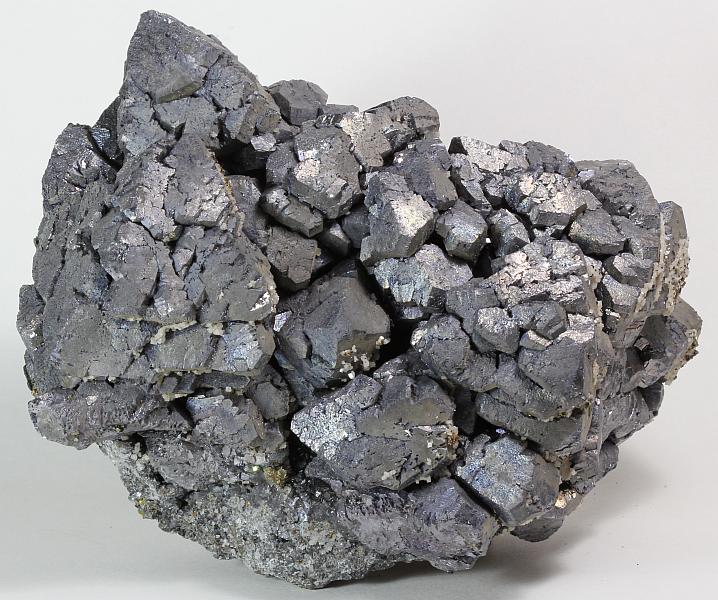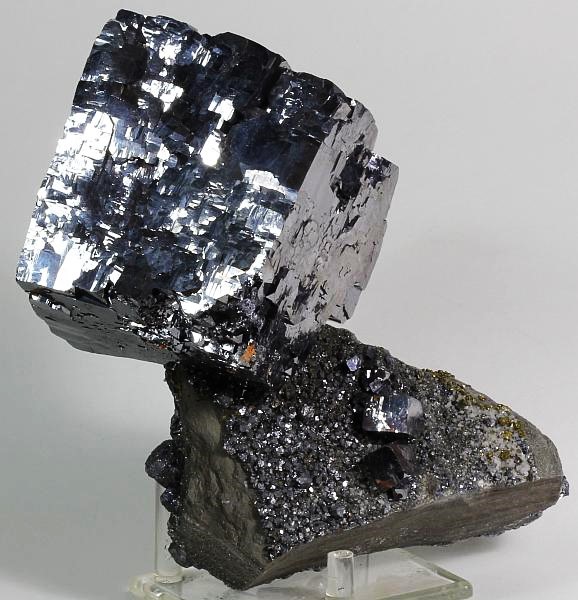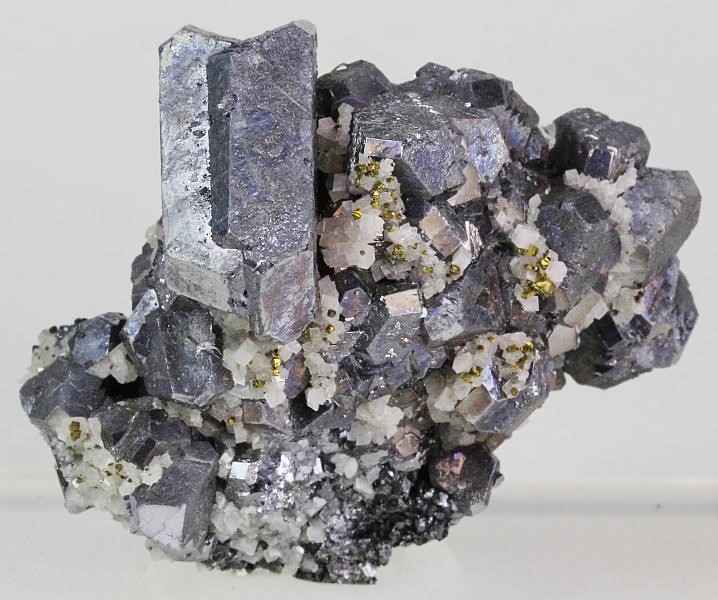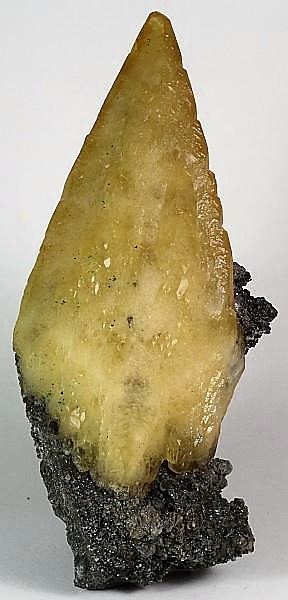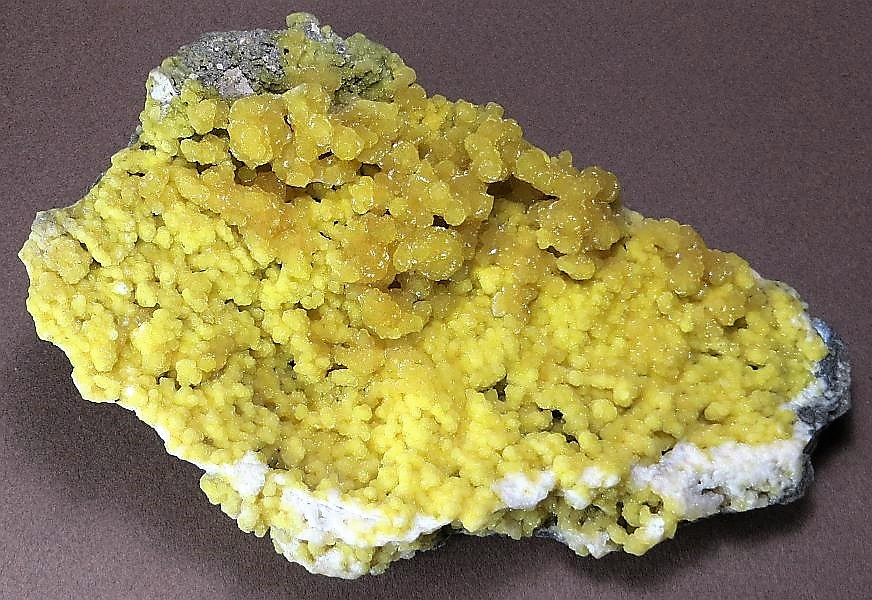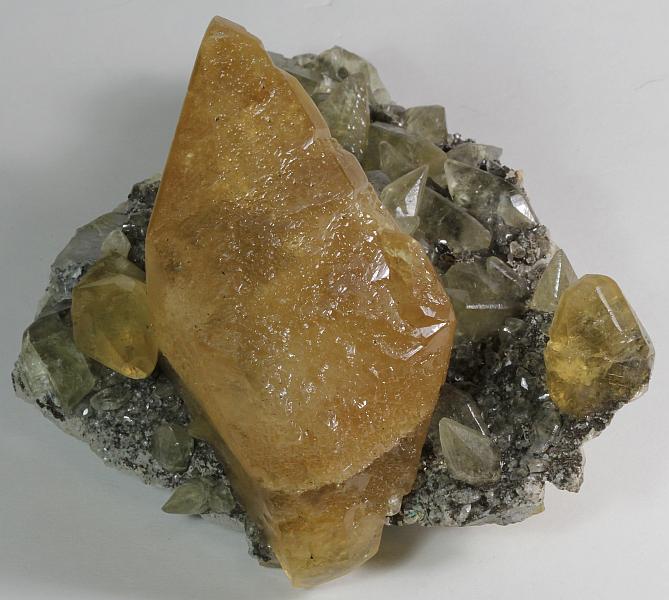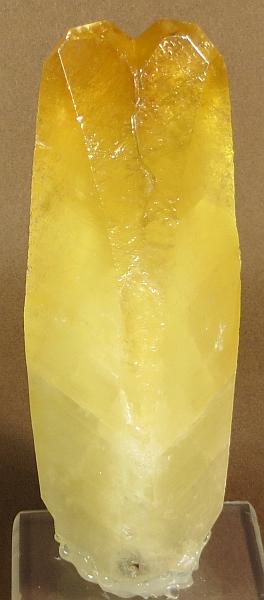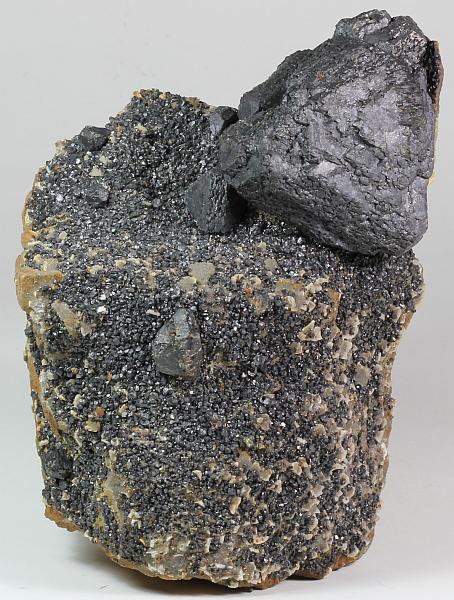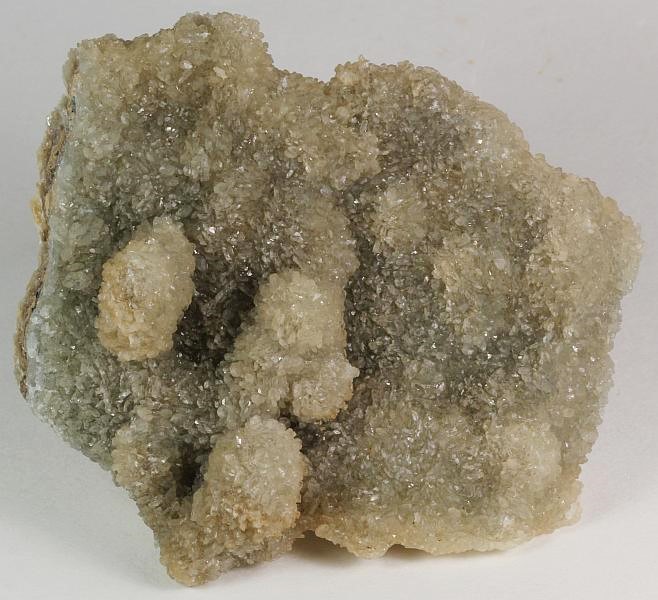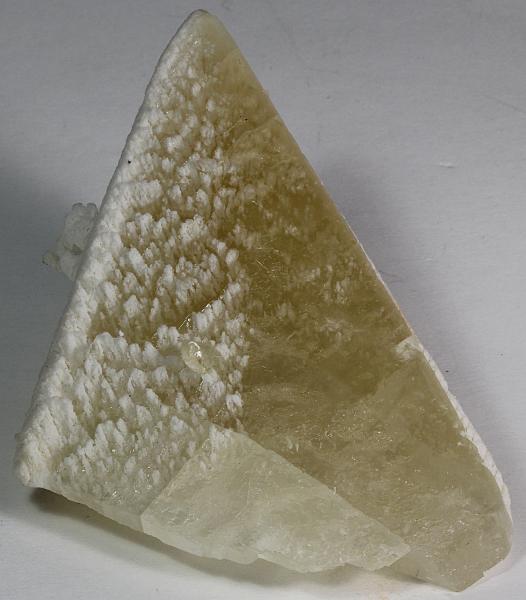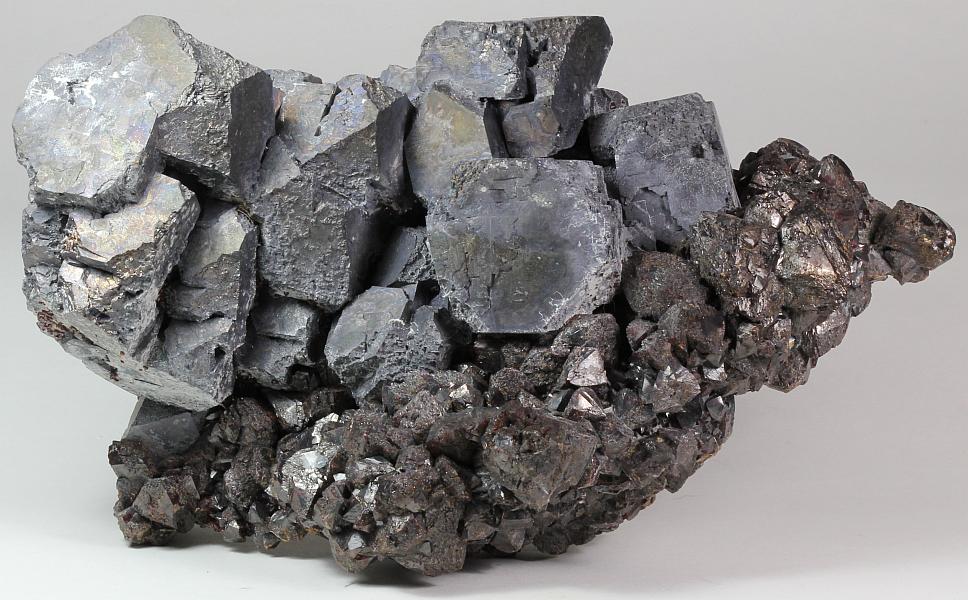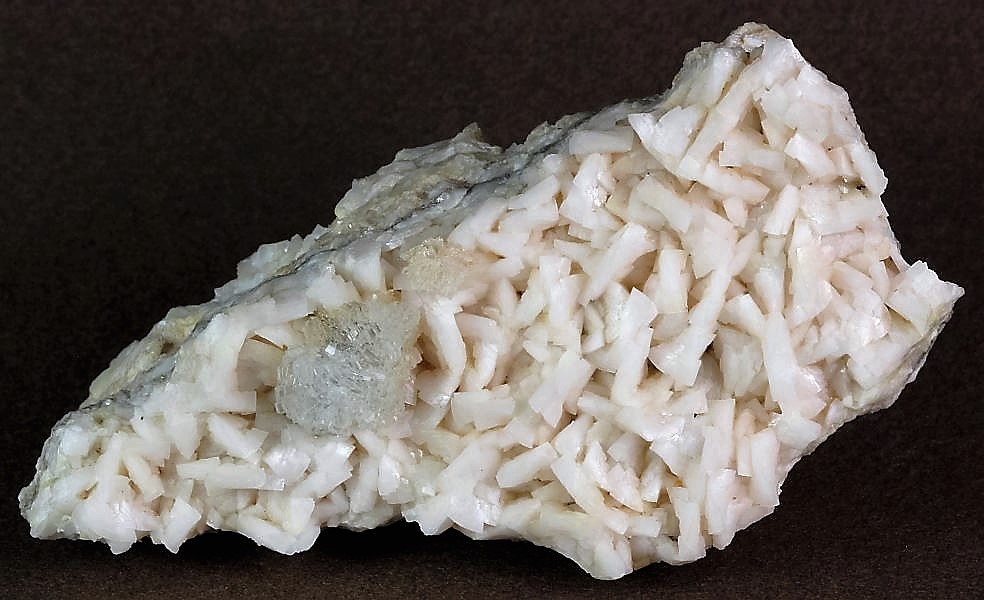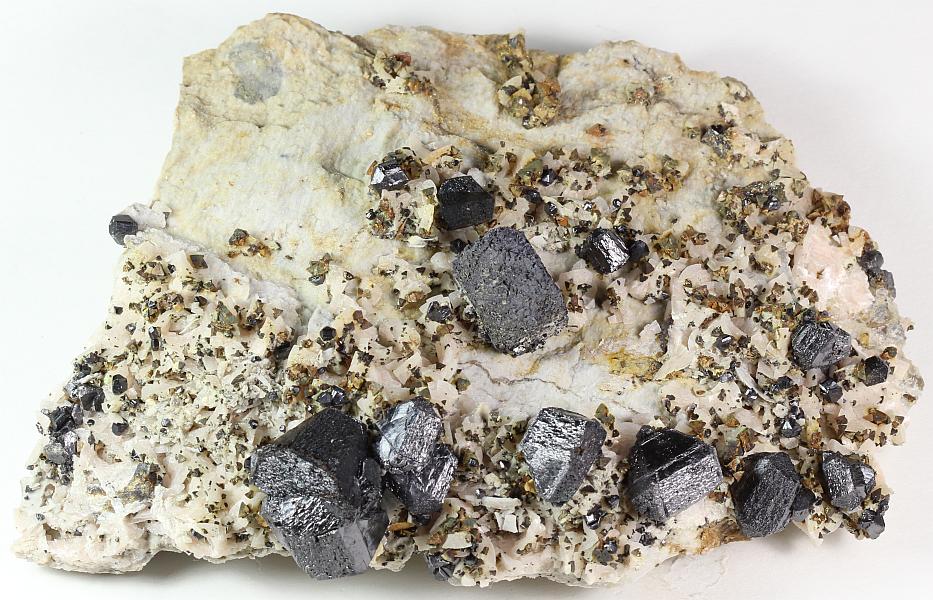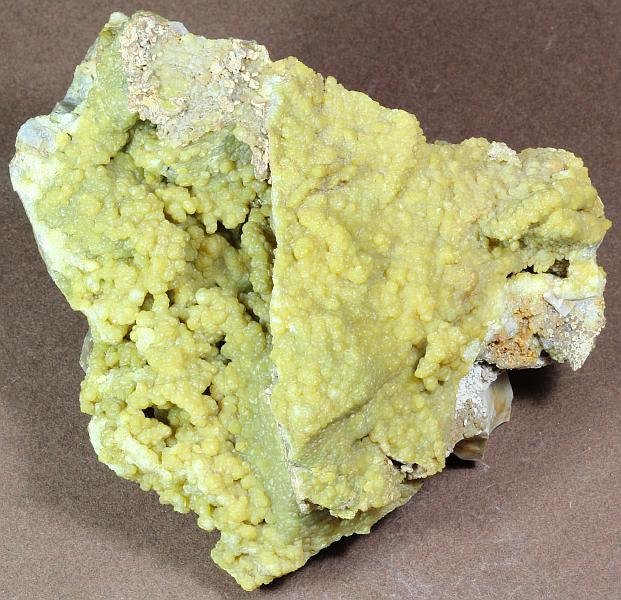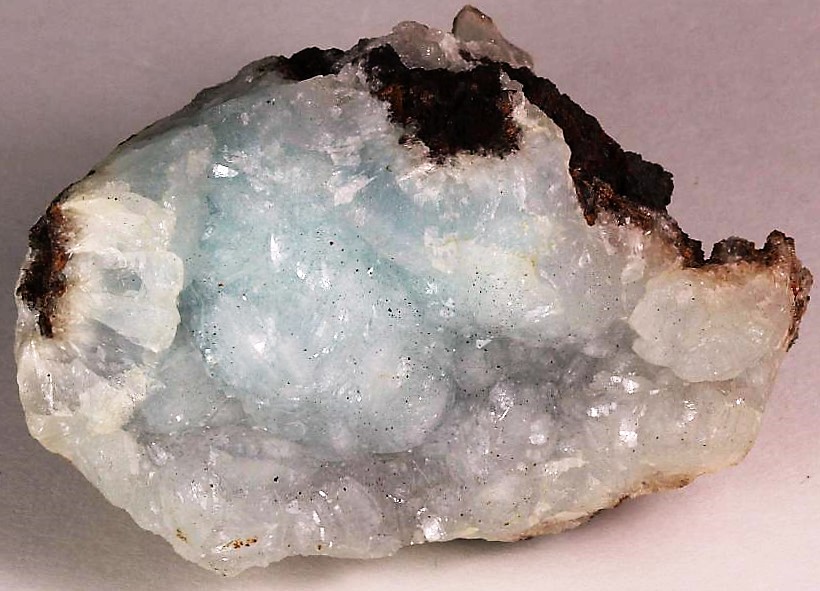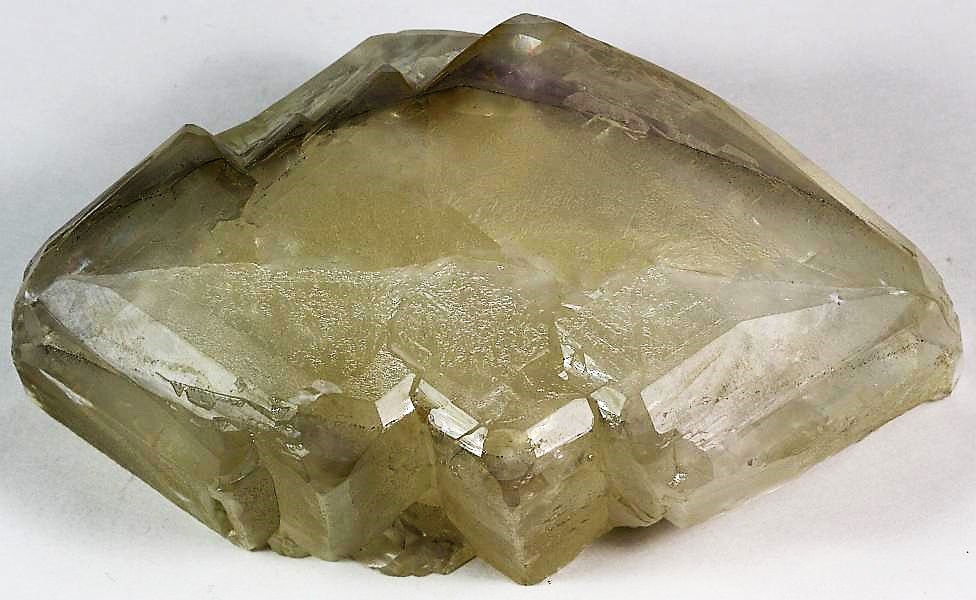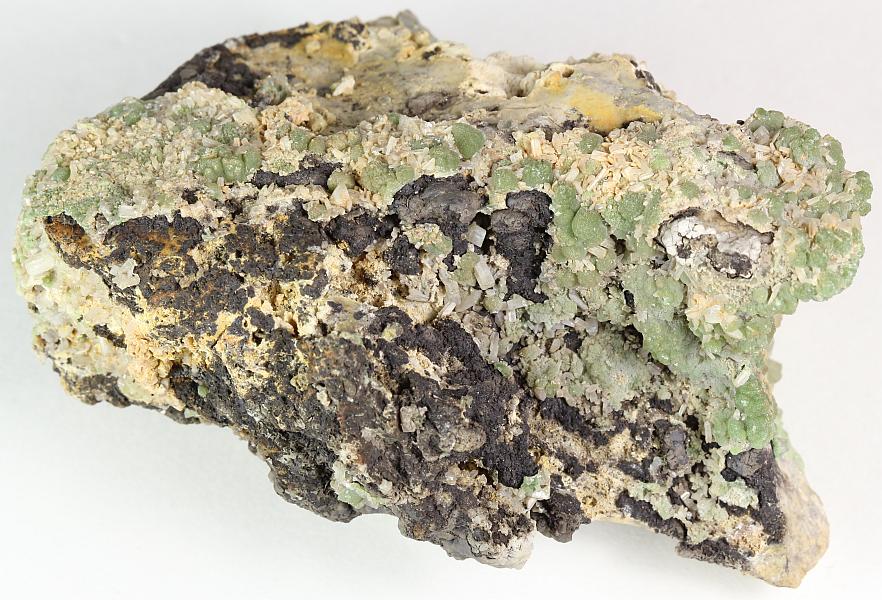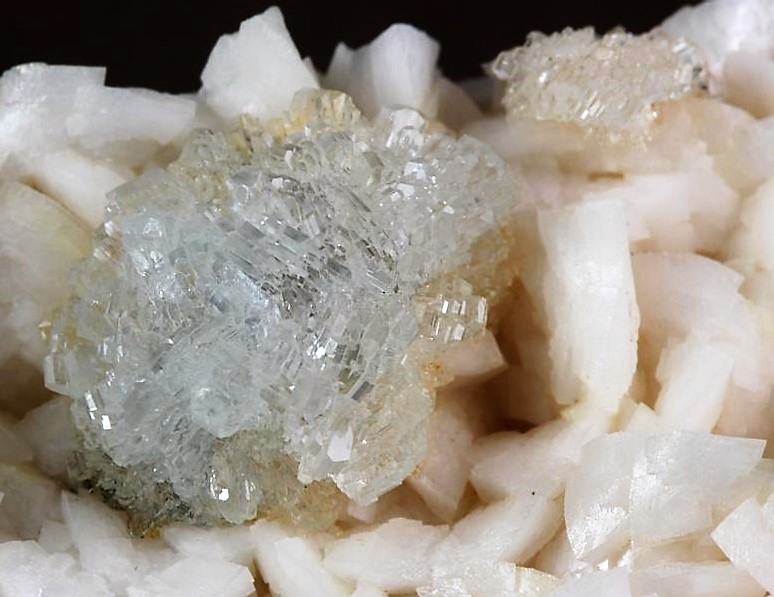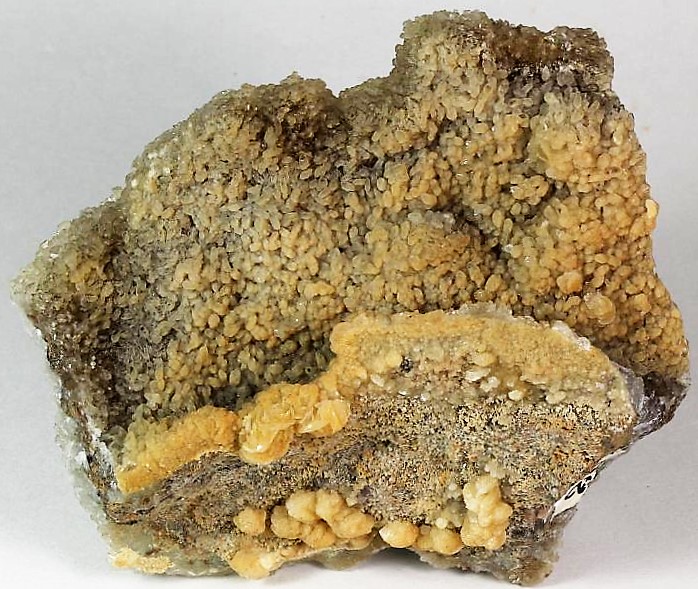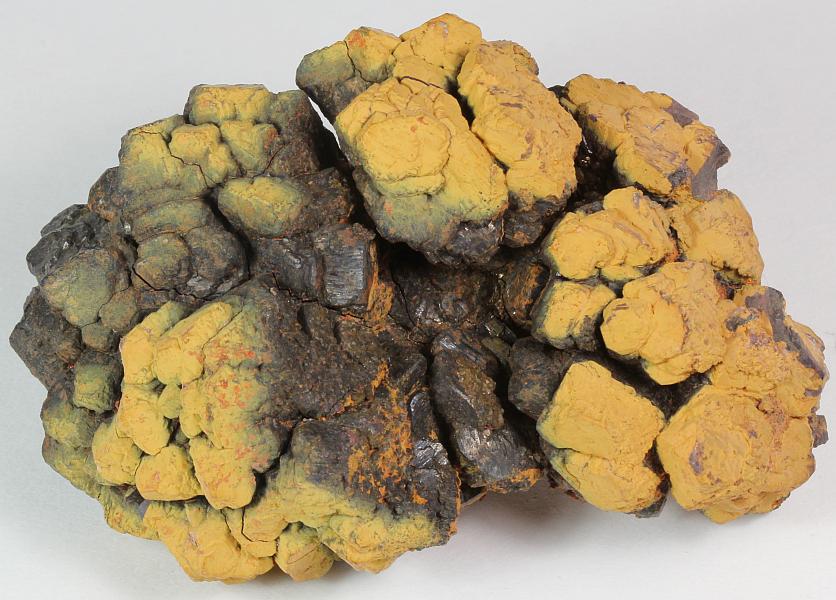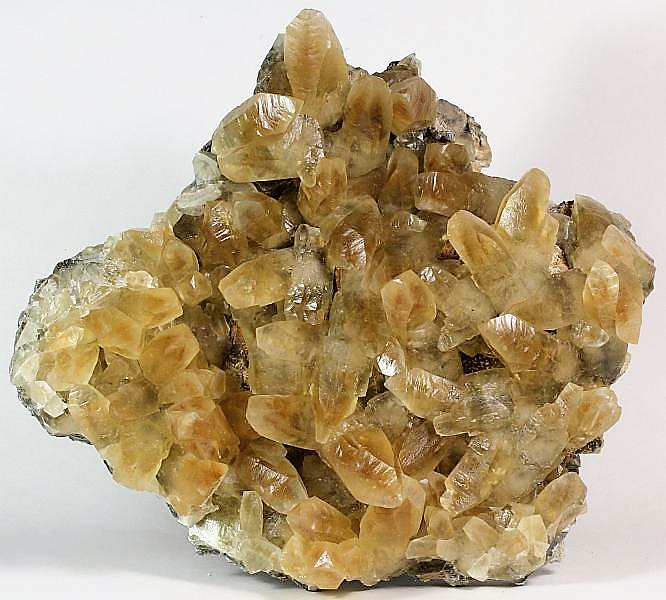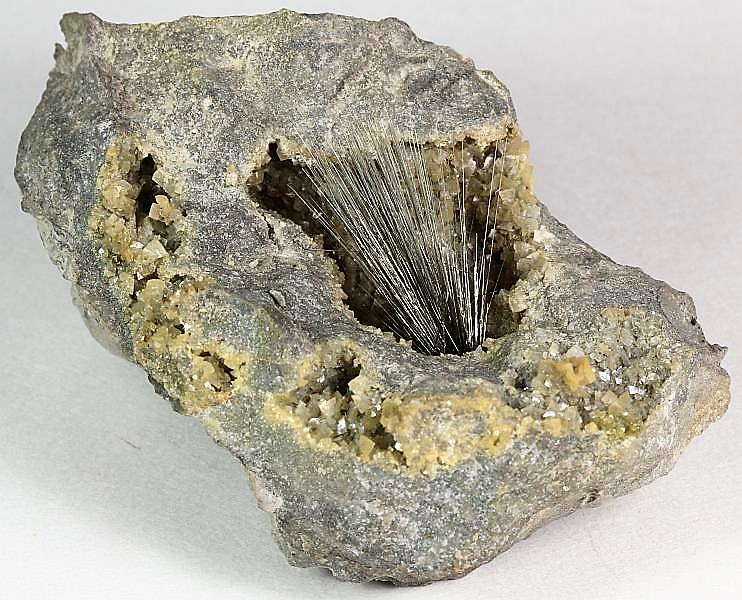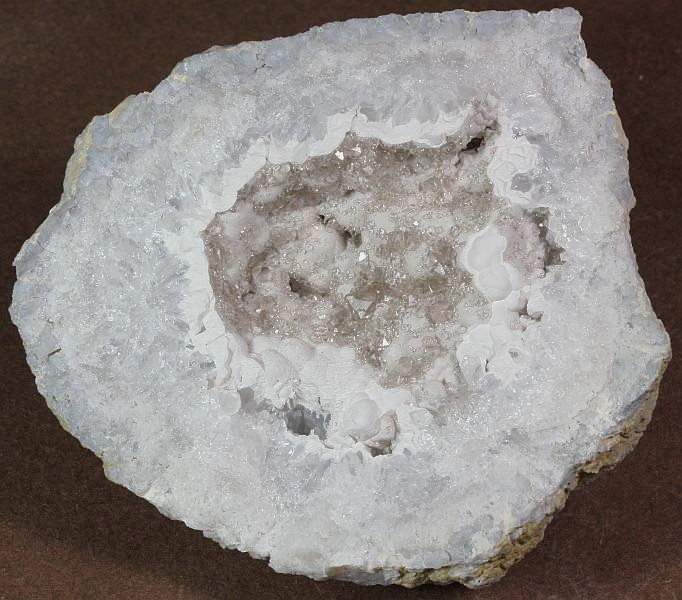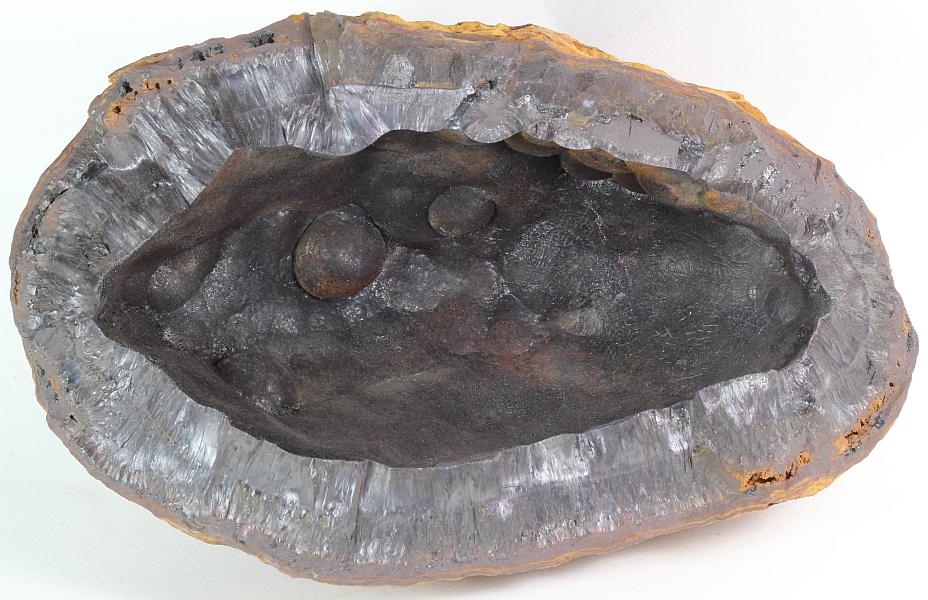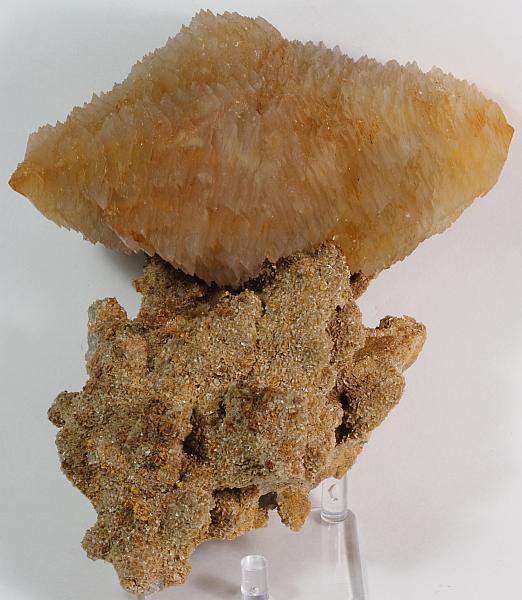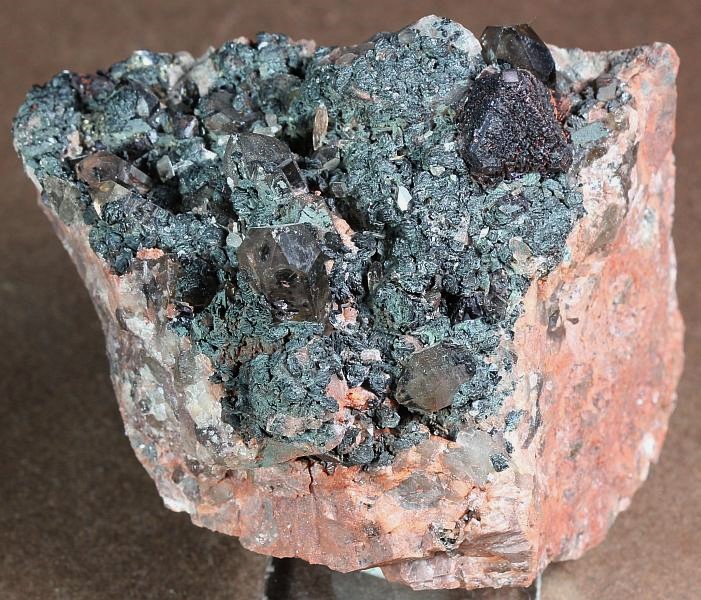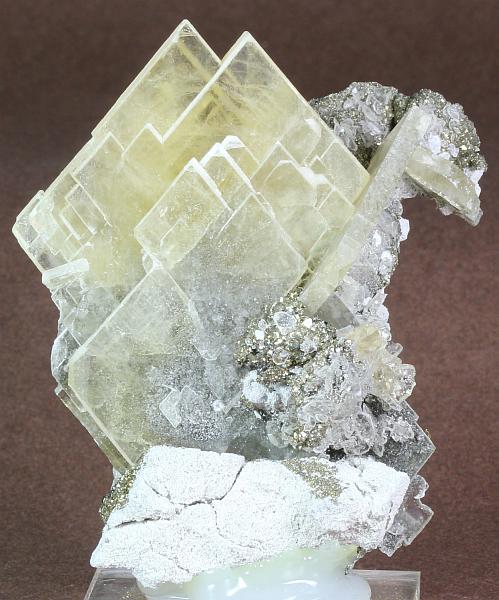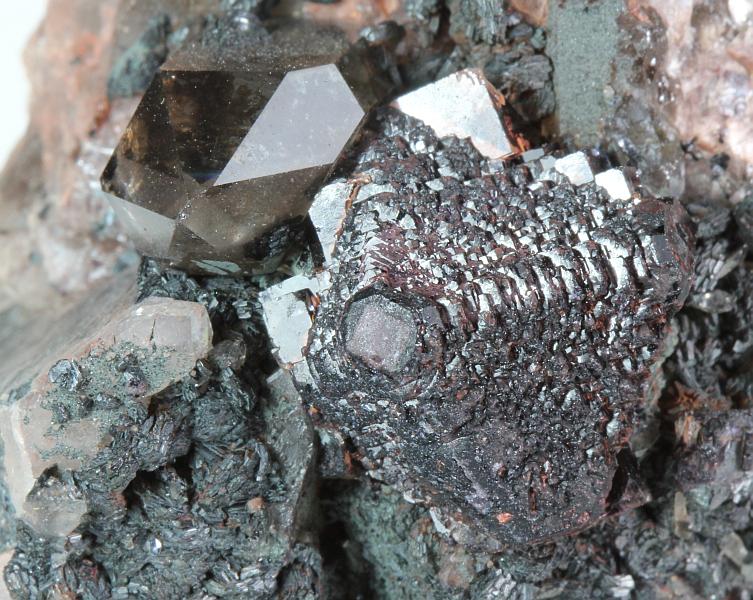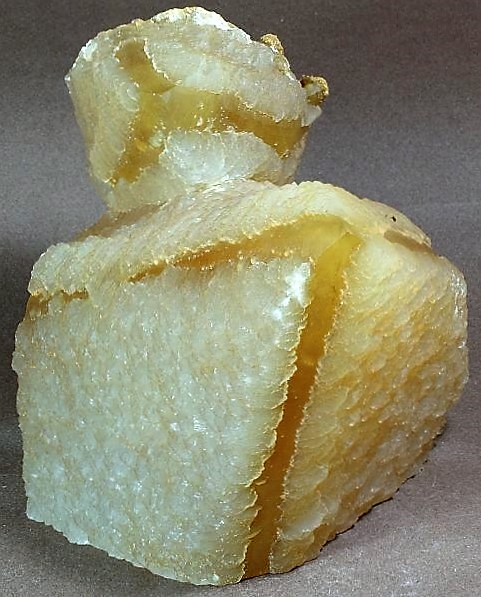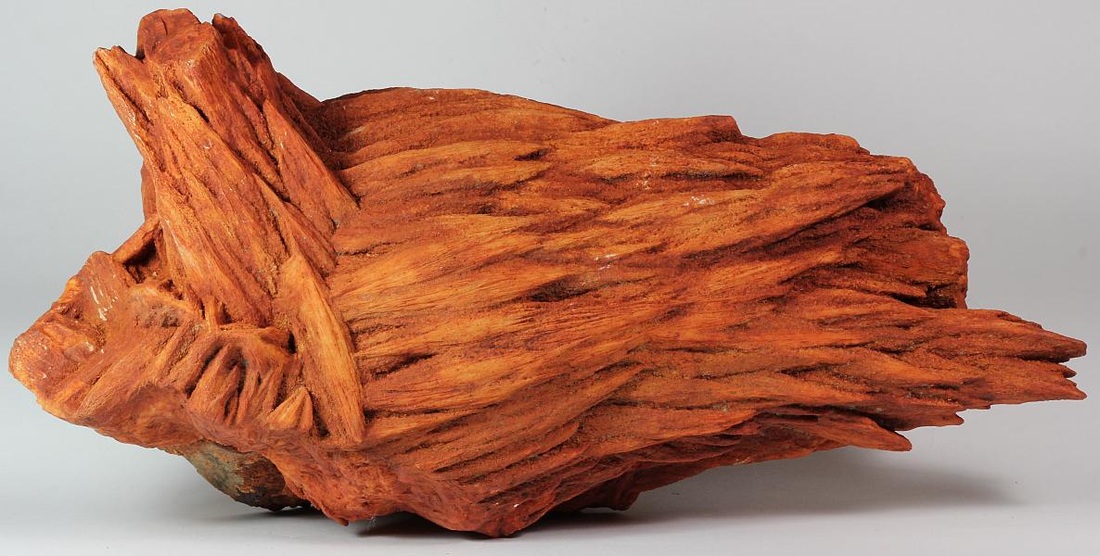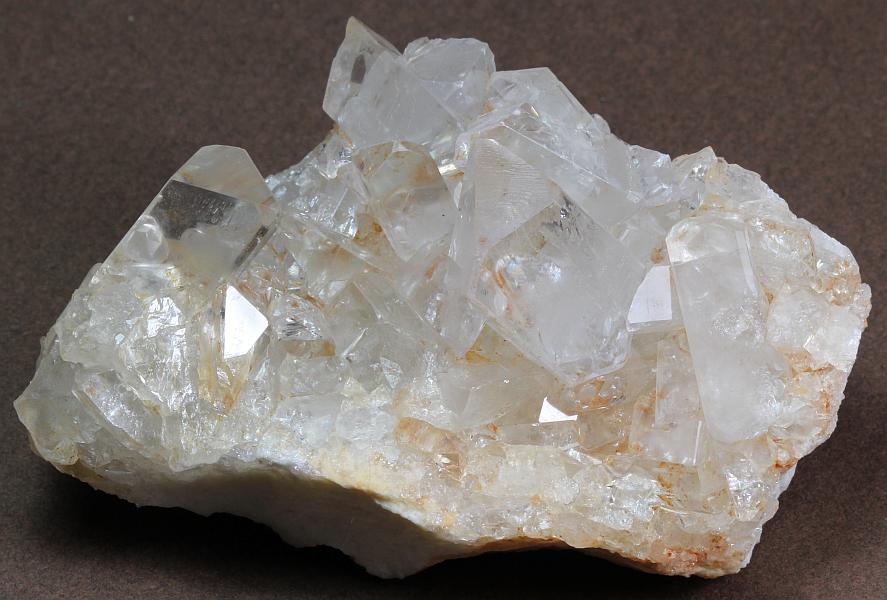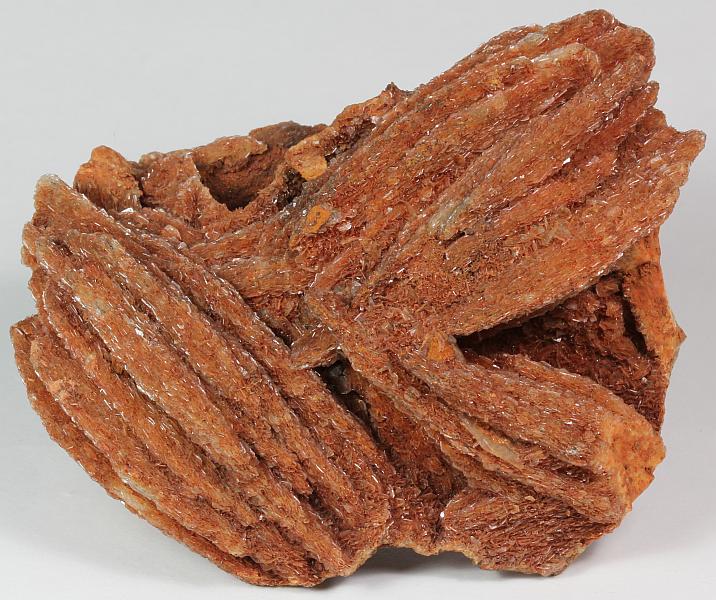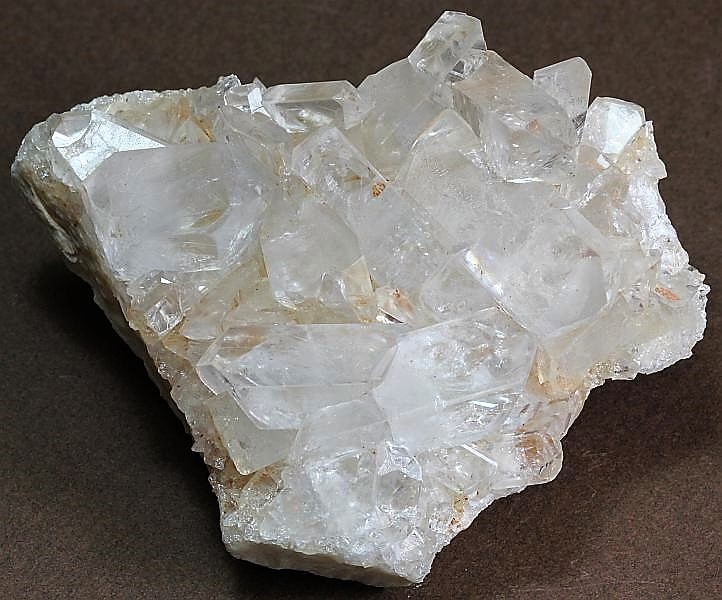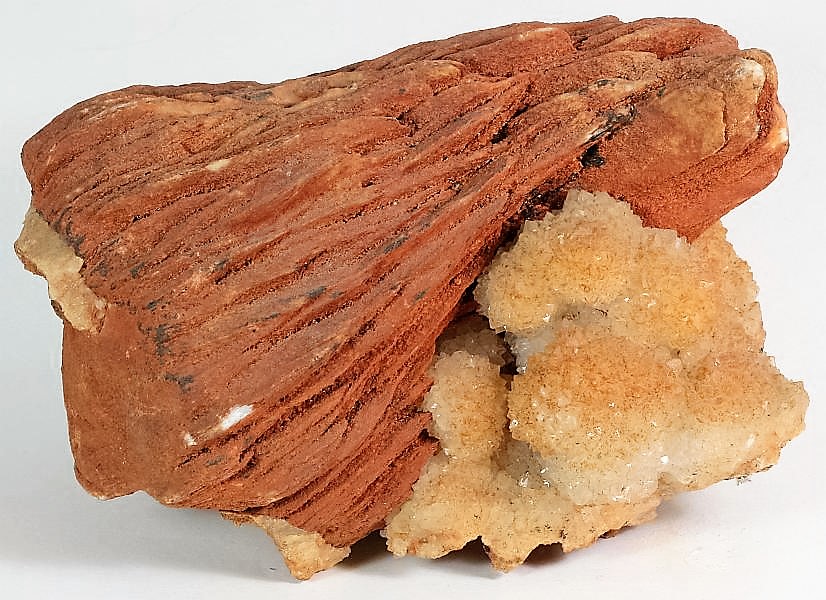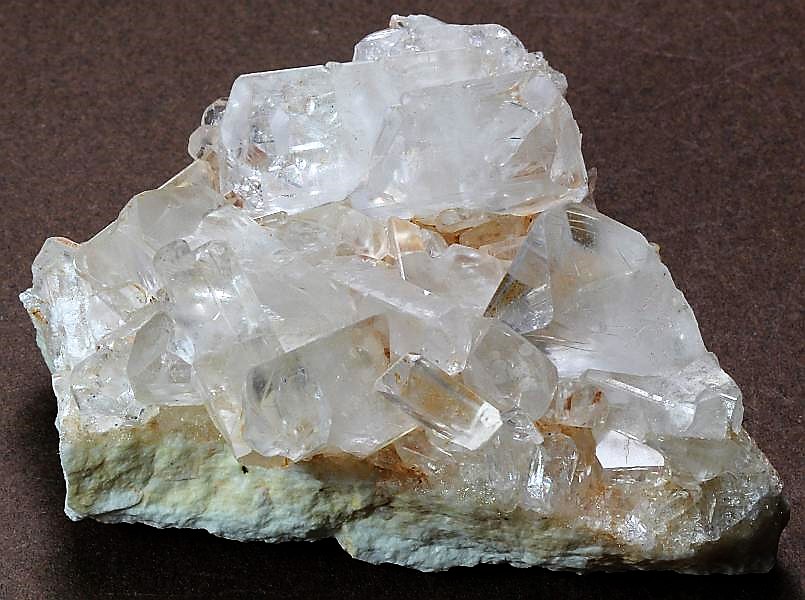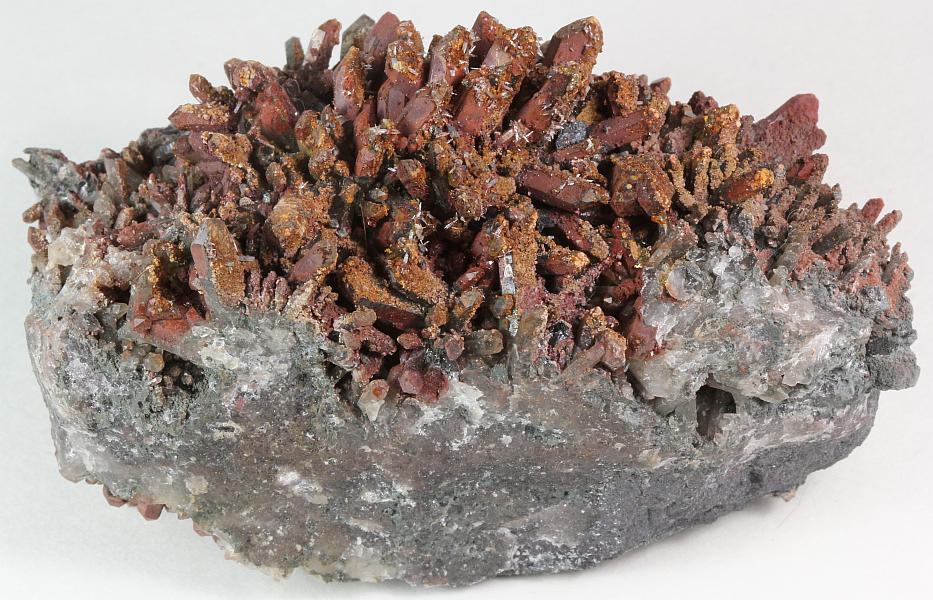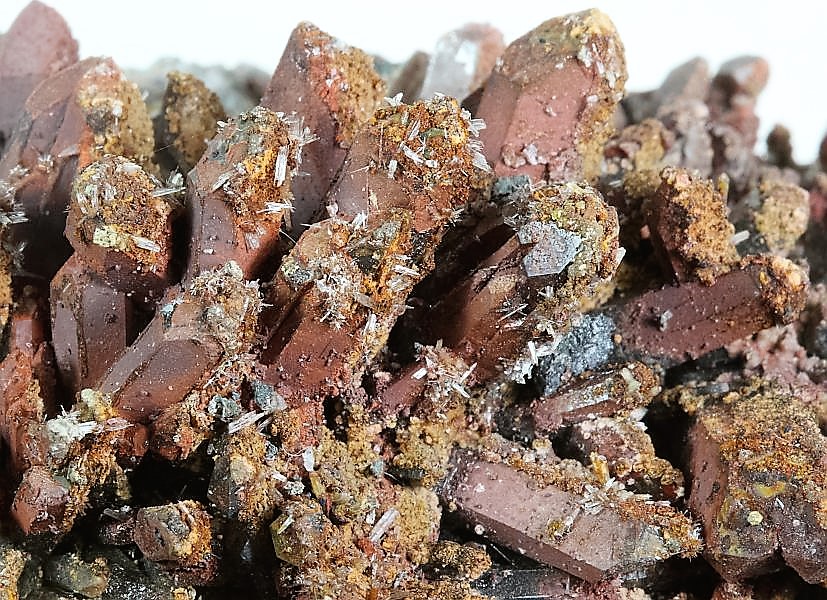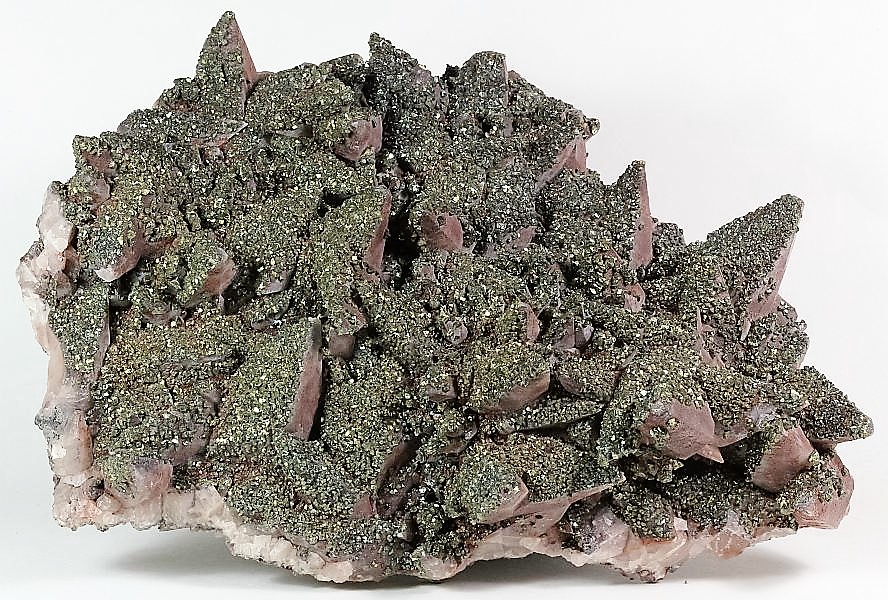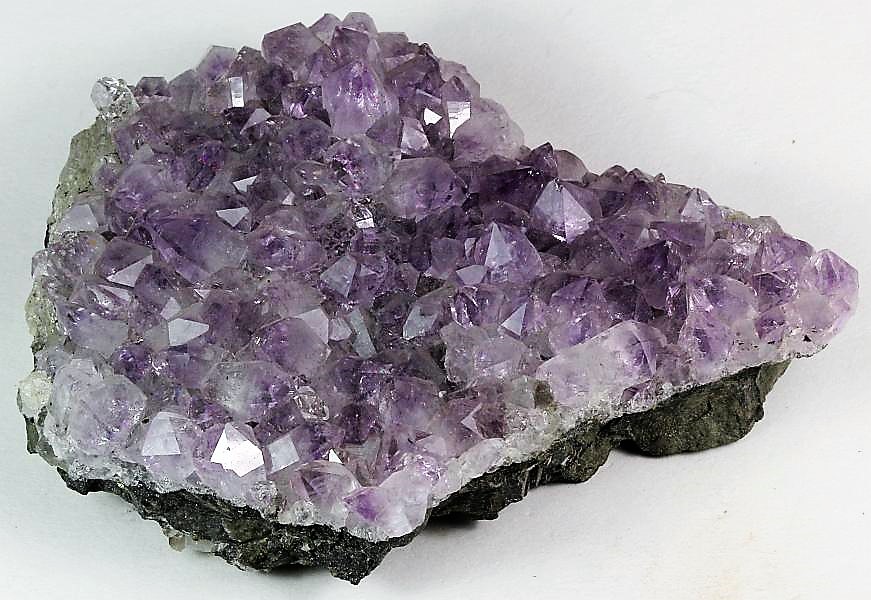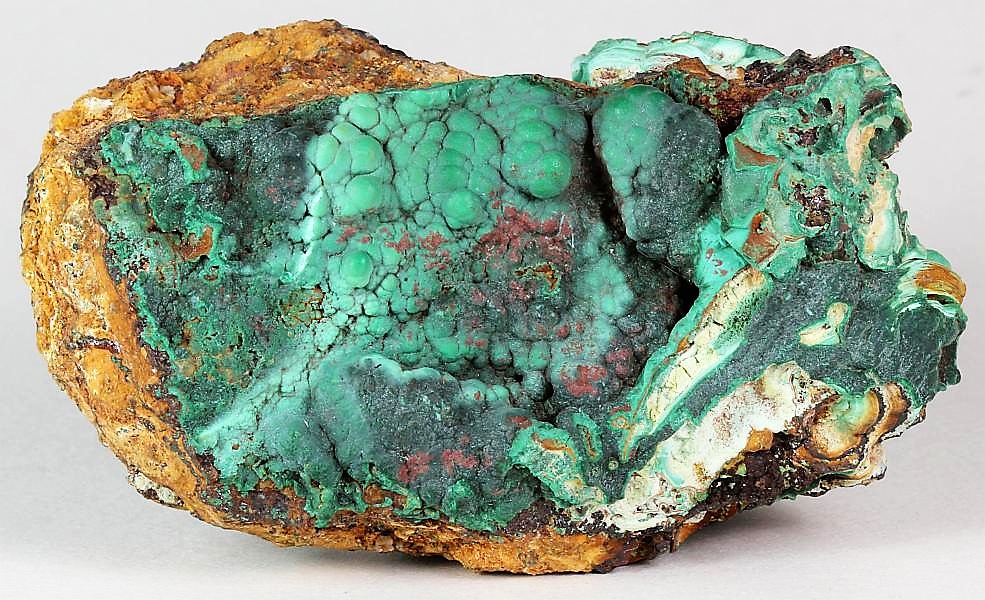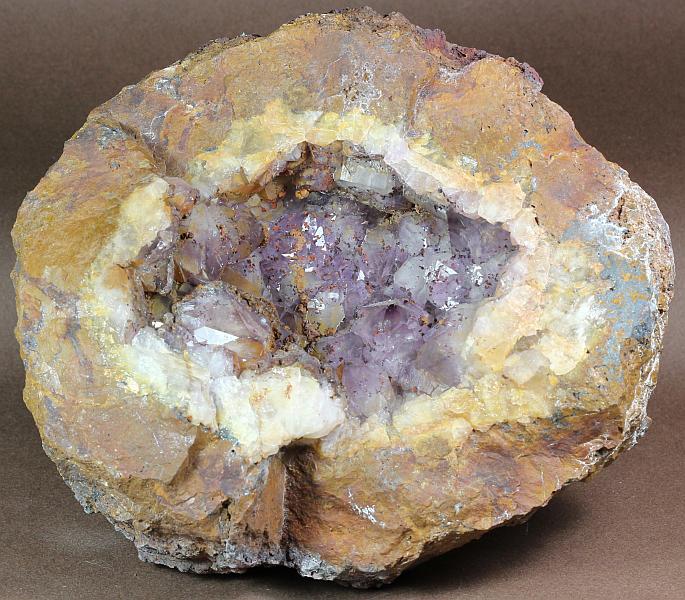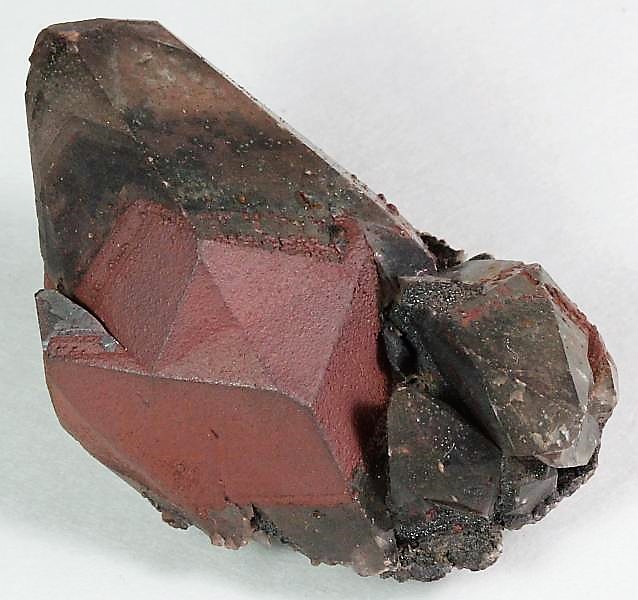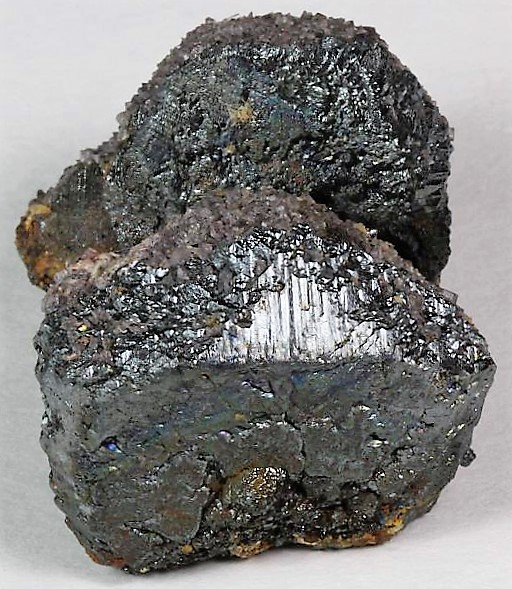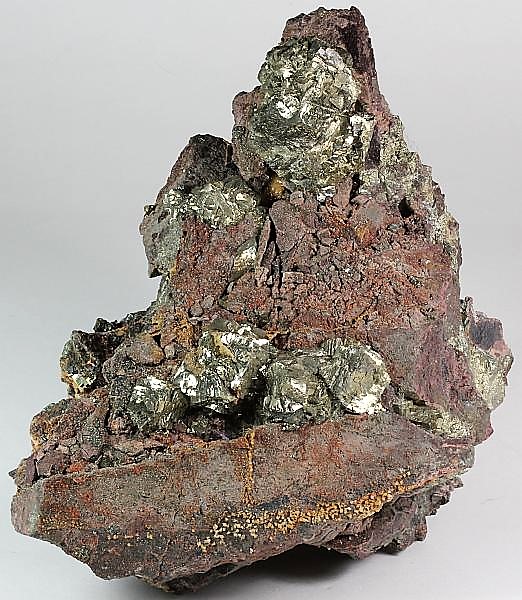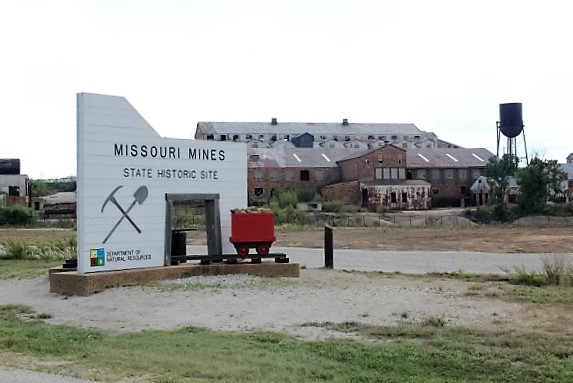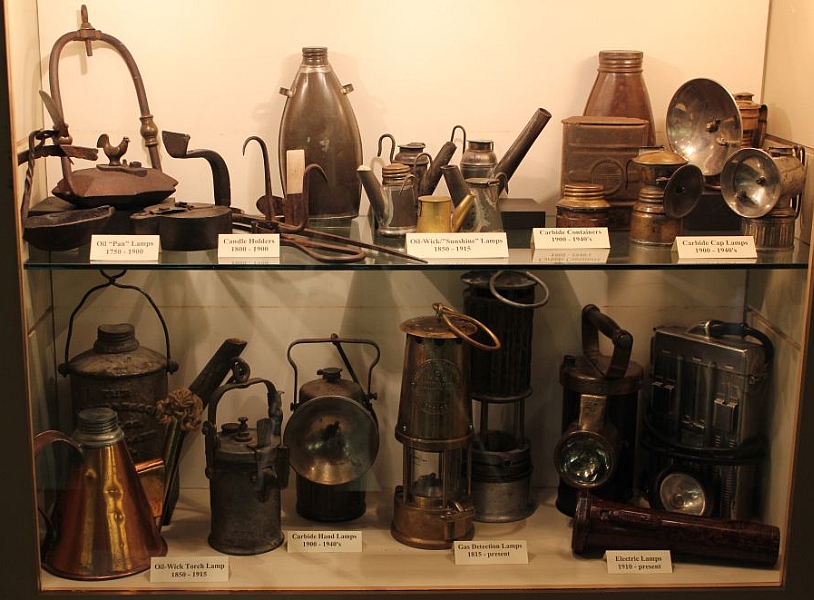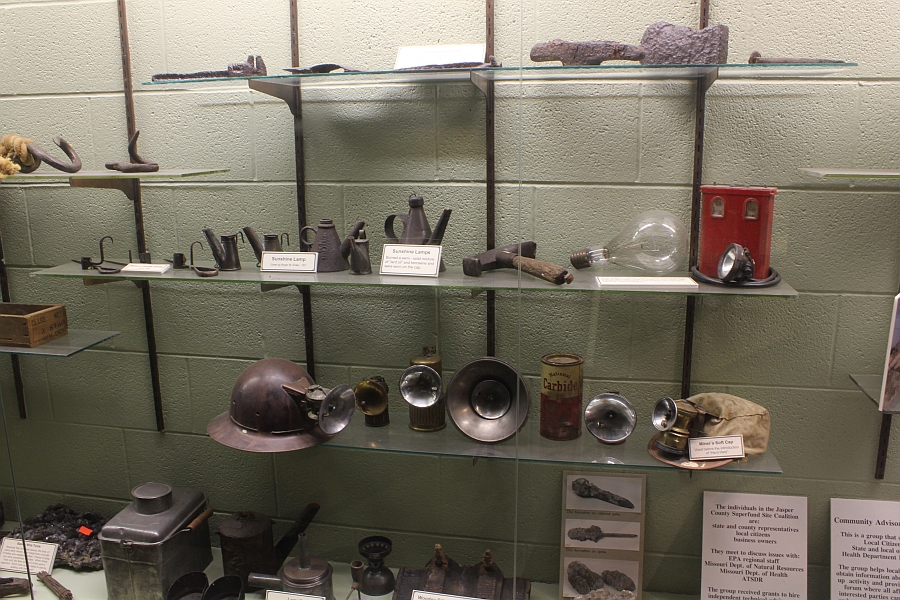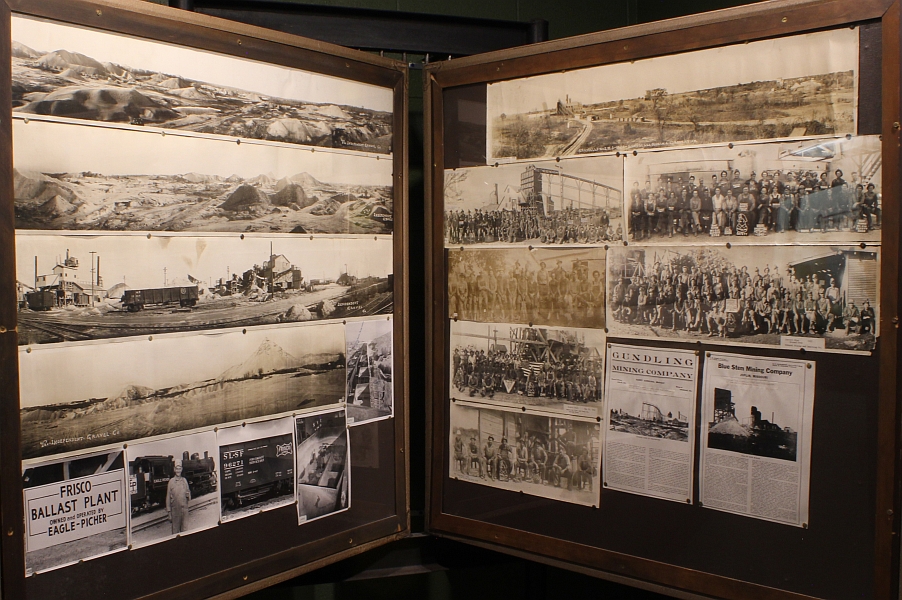|
The mines, quarries, road cuts and streams in Missouri offer mineral enthusiasts the potential to add fine specimens to their collections. Despite its relatively simple geology, Missouri has large mineral resources, typically ranking among the top six States in the production of lead, zinc, silver, copper, lime, tripoli, fire clay and sand & gravel. A few other geologic commodities are produced but they are fairly insignificant.
|
Virburnum Trend
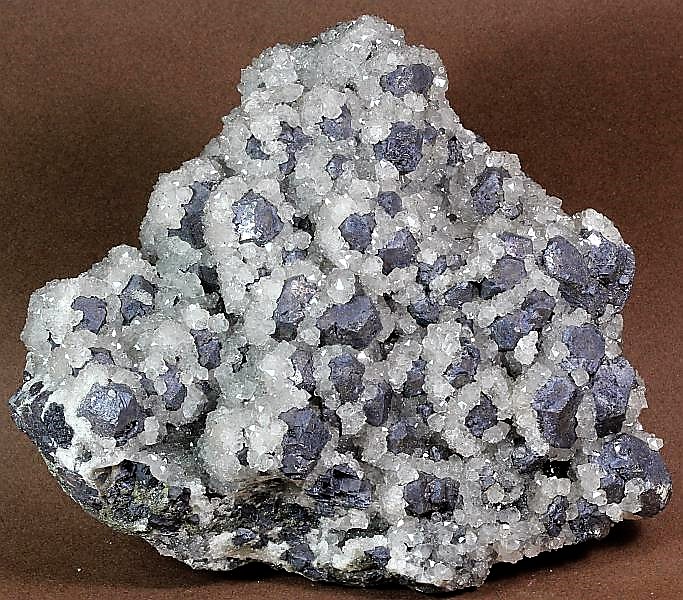
Quartz on Galena – Magmont Mine, Bixby, Viburnum Trend District, Iron County, Missouri -
18.5 x 15 x 10.5 cm. -
Lustrous quartz crystals richly coat cube-octahedral galena crystals. Almost all of the displayable quartz specimens found in the Viburnum Trend came out of either the Magmont or Buick Mine.
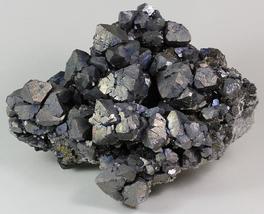
Galena – Brushy Creek Mine, Oates, Viburnum Trend District, Reynolds County, Missouri -
15 x 12 x 8.5 cm. -
Iridescent octahedral galena crystals dominate this specimen that also has sphalerite, dolomite and chalcopyrite in association. The iridescence is caused by a microscopic layer of chalcopyrite on the galena.
|
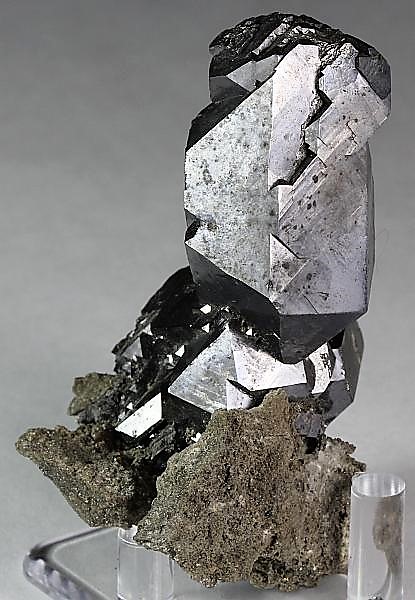
Galena – Indian Creek Mine, Ebo, Viburnum Trend District, Washington County, Missouri -
8 x 5.5 x 4 cm. -
Indian Creek Mine was an outlier deposit of the Viburnum Trend. Although it produced some very good specimens, it wasn’t open very long so pieces from there are very scarce. This one features a highly modified twinned crystal on dolomite matrix.
|
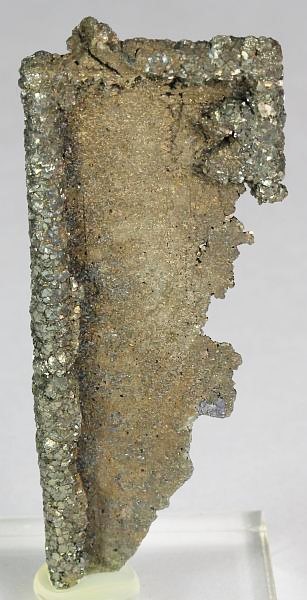
Marcasite after Anhydrite – Sweetwater Mine, Ellington, Viburnum Trend District, Reynolds County, Missouri -
5.6 x 2.3 x 0.5 cm. -
This epimorph formed when marcasite grew over a sharp anhydrite crystal, then the anhydrite naturally dissolved away. These oddities are fairly rare in the Viburnum Trend.
|
Tri-State Mining District
|
The Tri-State Mining District was a fantastically prolific specimen producing area, but all of these mines have been closed for decades. This mining district was in parts of 15 counties in Southwest Missouri, plus Cherokee County, Kansas and Ottawa County, Oklahoma. The mines near the Missouri towns of Granby, Joplin, Oronogo,Duenweg and Webb City were among the most famous for fine specimens. Even though the Tri-State District and the Viburnum Trend are about 175 miles apart there are quite a few specimens mislabeled as to their location. There are two easy ways to determine which of these mining districts a piece is from. Specimens from the Viburnum Trend have a limestone or dolostone matrix, and usually have individual small white to cream colored rhombic dolomite crystals. Specimens from the Tri-State District are on chert matrix, and the pink dolomite crystals are larger and are curved to saddle shaped.
|
|
|
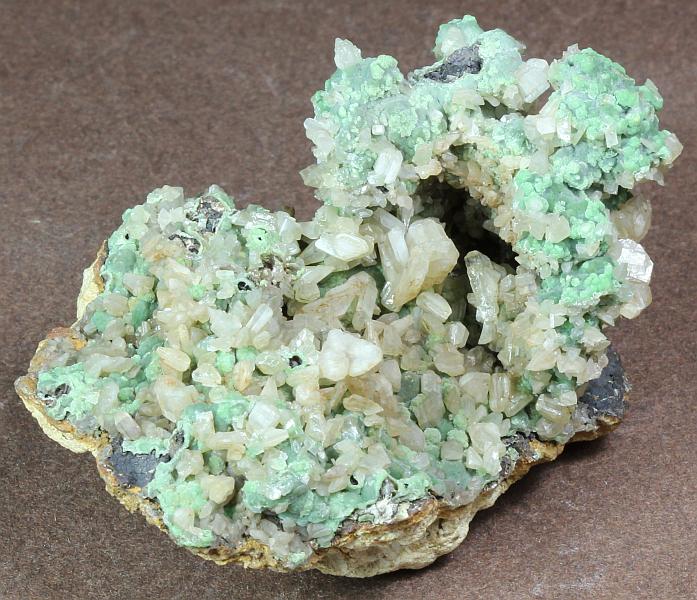
Cerussite & Pyromorphite –Tri-State District, Missouri -
6 x 4.5 x 4 cm. -
Twinned cerussite crystals are on globular pyromorphite. Secondary lead and zinc minerals were very rare in the Tri-State District, and were only found in the deposits that were near the ground surface. Nearly all of these specimens were found in the late 1800’s to early 1900’s.
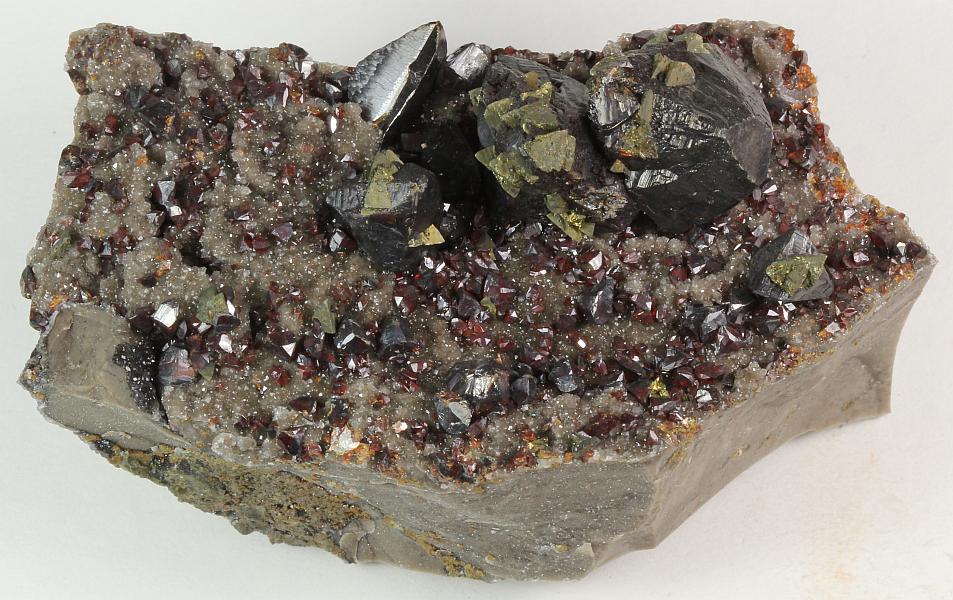
Sphalerite & Chalcopyrite – Joplin, Tri-State District, Jasper County, Missouri -
9 x 4.5 x 4.5 cm. -
Sphalerite crystals have some aligned chalcopyrite crystals in association. The miners in the Tri-State District called the dark sphalerite crystals “black-jack”, and the red sphalerite crystals “ruby-jack”.
|
|
Limestone Quarries, Road Cuts and Streams
|
Missouri has a LOT of limestone quarries throughout the State. Many of these produce calcite crystals, and some also produce barite, pyrite or millerite specimens. The limestone and shale layers are also exposed in road cuts and streams, and some of these have geodes that contain a nice variety of minerals. There are also some granite quarries and outcrops. Pegmatite pods within the granite are relatively rare, but they occasionally produce displayable specimens. John Sinkankas even made mention of Missouri pegmatite specimens in his “Emerald and Other Beryls” book.
|
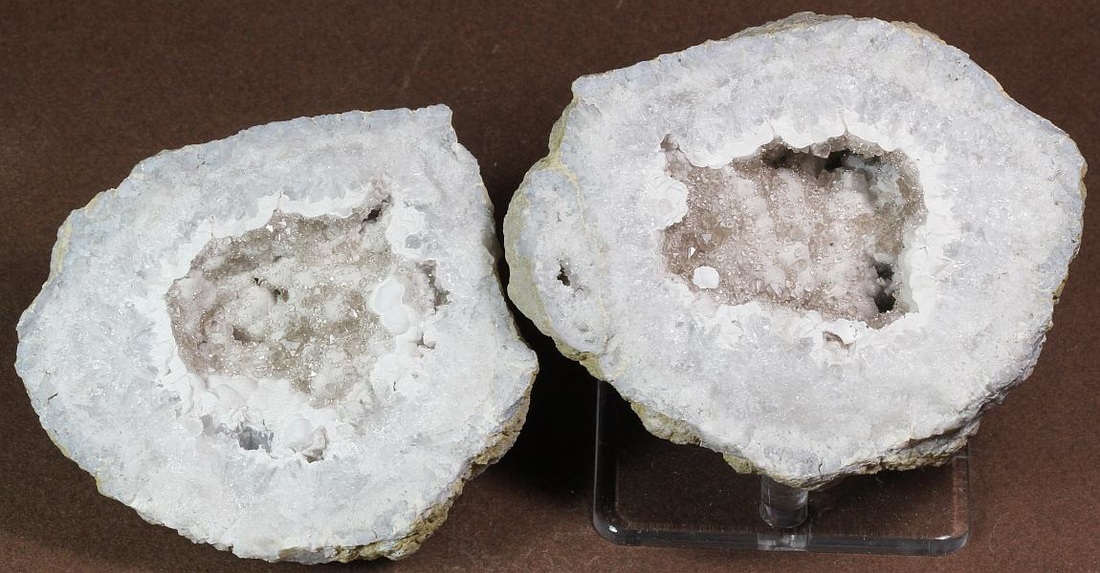
Quartz – St Francisville, Clark County, Missouri -
9.5 x 8 x 6.9 cm. -
Light smoky quartz crystals are on white chalcedony. It’s not hard to realize why these are called “dewdrop” geodes. Limestone and shale layers in Northeast Missouri, Southeast Iowa and the adjacent area in Illinois contain numerous geodes. Any quarry, road cut or stream that intersects the right rock layer produces geodes.
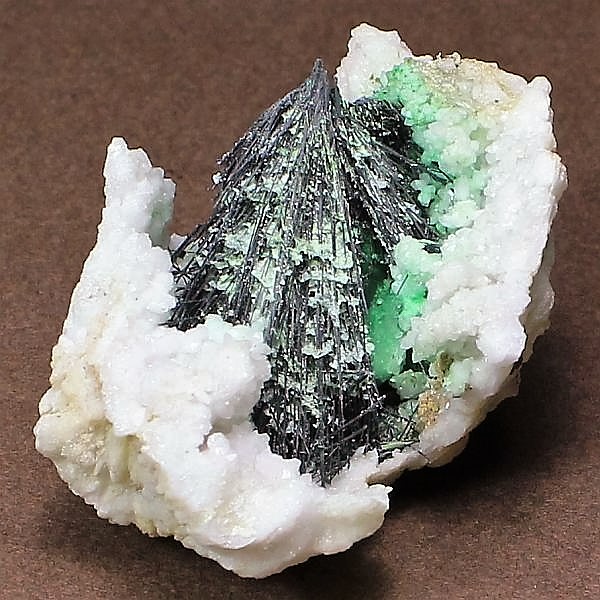
Honessite after Millerite – Antire Road, St Louis County, Missouri -
5.2 x 4 x 3.5 cm. -
A small area near Antire Road in St Louis County produced these specimens in the 1960’s. Quartz geodes were completely filled with calcite. These had to be put in a weak acid solution to remove the calcite, and sometimes honessite after millerite was in the geode. This is an exceptionally large spray. Most of the sprays were about 1 cm in length.
|
|
|
|
Barite Mining Districts
|
There used to be two important barite mining districts but both closed many years ago. Specimens from the Washington County District are typically stained a dark reddish color due to iron in the soil, while specimens from the Central District (which was mainly in Morgan, Moniteau, Cole, Miller, and Camden Counties) have cream-white to colorless crystals. A note of interest: Moses Austin, father of Stephen F. Austin of Texas fame, was very interested in developing lead mines in Washington County, Missouri. This ultimately resulted in the discovery of many of the barite deposits there.
|
|
|
|
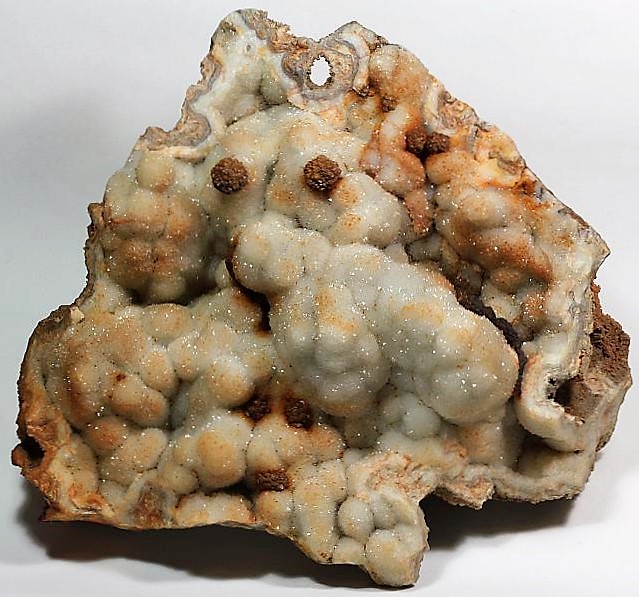
Druse Quartz with Limonite after Pyrite –Unnamed deposit near Maddin Creek, Washington County, Missouri -
30 x 29 x 15 cm. -
Druse quartz is fairly common in Potosi Formation, and is usually found near barite deposits. This specimen has pseudomorphs of limonite after pyrite on the sparkling quartz crystals.
|
Iron Ore
|
Missouri also used to be a leader in iron ore production. Most recently, the Pea Ridge Mine in Washington County was the deepest working iron ore mine in the U.S. Missouri had many iron ore mines operating the southeastern part of the state. Dr. Fred Pough, author of the famous “A Field Guide to Rocks and Minerals”, while attending Washington University in St Louis wrote his Master’s Thesis on iron ore mines in Missouri (mainly in Franklin County). Fine specimens may still be found in mine dumps and road cuts.
|
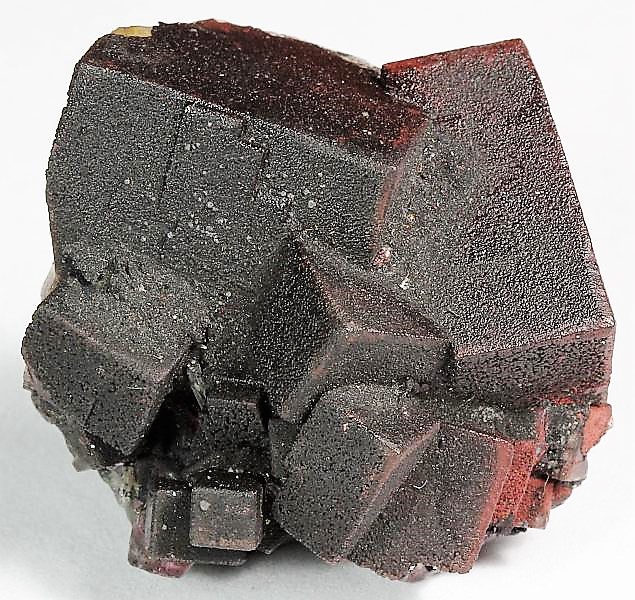
Fluorite – Pea Ridge Mine, Washington County, Missouri -
3.7 x 3.5 x 2.3 cm. -
Fluorite specimens were very uncommon in Pea Ridge Mine. They were usually purple, but some yellow ones were found. It was often hard to see what color they were because like this one they were usually covered with a dense hematite layer.
|
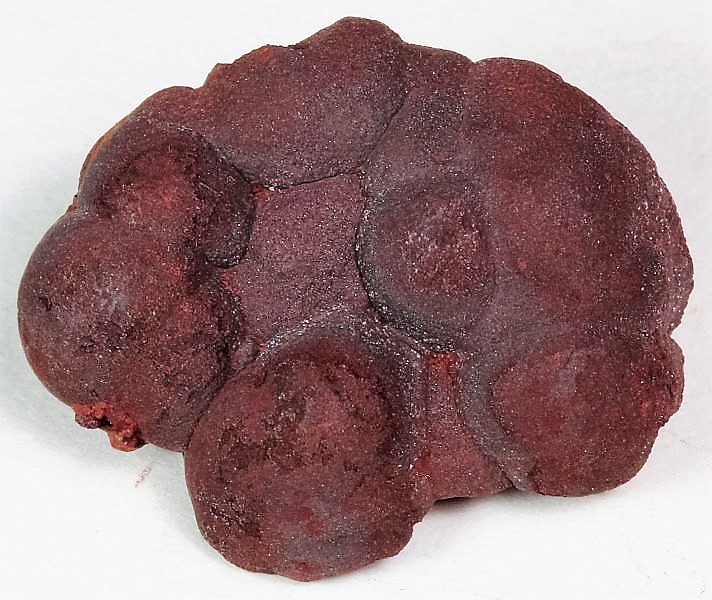
Hematite – Salem, Dent County, Missouri -
2.2 x 1.7 x 1 cm. -
Although this specimen is small, it’s one of the most aesthetic hematite specimens that I’ve found in Dent County. The land owner wants to keep the mine name anonymous so I can only tell you that the mine operated in the mid to latter part of the 1800’s, and has been closed for over a hundred years.
|
|
|
The Missouri Mines State Historic Site in Park Hills is about an hour drive south of St Louis. Their museum houses a good variety of mineral specimens, as well as a gallery devoted to mining equipment. For more information see www.mostateparks.com/park/missouri-mines-state-historic-site
When in Joplin be sure to visit the Everett J. Ritchie Tri-State Mineral Museum in the Joplin Museum Complex. There are displays of the minerals from the area, as well as exhibits of mining artifacts and historic photos of the mines and miners. For more information see: http://joplinmuseum.org/about.htm
About Kevin Conroy...I got my start in collecting rocks and minerals over 50 years ago when I was six. My parents happened to buy a home near a creek that was loaded with all sorts of treasures (at least they were for a young novice collector). We took some of these finds to a rock shop in Saint Louis, Missouri that was run by Howard York, a man who I’ll be ever grateful to. He took the time to teach me a bit about minerals and fossils, and encouraged me to join a rock club. Well, that was it, I was hooked, and eventually earned my degree in geology. My collection includes some minerals that I self-collected underground in the Tri-State District, Pea Ridge Mine, Sweetwater Mine, Brushy Creek Mine, Buick Mine, Elmwood Mine, numerous surface deposits, quarries and road cuts. Field collecting is still a love of mine, even though the places that grant permission to collect are ever dwindling.
|


